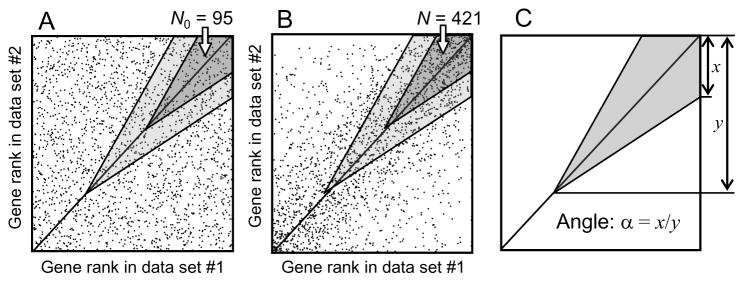Fig. 2.
Estimating Expected Proportion of False Positives (EPFP) for positively coregulated genes: (A) no coregulation (null hypothesis); (B) coregulated genes are counted in a shaded wedge area; (C) using angle to define the shape of the wedge area. For the dark-shaded wedge area, EPFP = N0/N = 0.225, where N0 and N are the numbers of data points in the area on conditions (A) and (B), respectively. The wedge shifts along the diagonal (i.e., down and left, to light-shaded area) till EPFP value reaches the threshold (e.g., EPFP = 1/3). Then all genes in the shaded area are considered coregulated.

